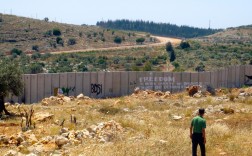Tag: Apartheid Wall
-
Revisiting Ni’lin after four years
2nd May 2013 | International Solidarity Movement, Ni’lin, Occupied Palestine By Team Nablus It’s been four years since I had visited and lived in Ni’lin and the decision to visit on Friday filled me simultaneously with excitement and longing but also dread. Four years ago I had supported the non violent resistance in Ni’lin as…
-
Ni’lin continues to resist after 5 years of Israeli occupation and systematic land theft
27th April 2013 | International Solidarity Movement, Ni’lin, Occupied Palestine By Team Nablus Around 50 Palestinians supported by around 20 international activists, demonstrated against the apartheid wall yesterday in Ni’lin, which is a village close to Ramallah. The residents attempted to dismantle the wall and were met with violence. Around 20 were treated for tear…
-
Activists remove section of apartheid wall in solidarity with Palestinian prisoners
17th April 2013 | International Solidarity Movement, Ramallah, Occupied Palestine This Palestinian Prisoners Day, the 17th April 2013, Palestinian and international activists cut down a fenced section of the Israeli apartheid wall in solidarity with Palestinian prisoners held in Israeli occupation jails. A section of around ten metres was torn down near Ofer prison, where…

